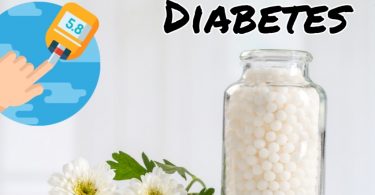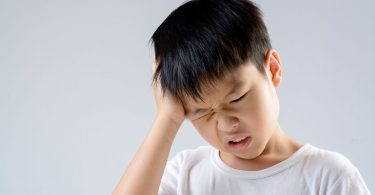TINEA & ITS HOMOEOPATHIC MANAGEMENT
Dr. Sunil Kumar Singh1
Dr. Kumari Rakesh2
Dr. Rakesh Kumar Meena3
1M.D. (PGR), Repertory, Swasthya Kalyan Homoeopathic Medical College and Research Centre, Sitapura, Jaipur, Rajasthan, India.
2M.D. (PGR), Materia Medica, Swasthya Kalyan Homoeopathic Medical College and Research Centre, Sitapura, Jaipur, Rajasthan, India.
3M.D. (PGR), Repertory, Swasthya Kalyan Homoeopathic Medical College and Research Centre, Sitapura, Jaipur, Rajasthan, India.
ABSTRACT: Dermatophytoses, also known as ringworm or Tinea is a chronic fungal infection of the skin, hair, and nails. Dermatophytoses refer to superficial fungal infection of keratinized tissues caused by keratinophilic dermatophytes. According to observations worldwide, dermatophytoses are the most common of the superficial fungal infections. It is common in tropics and may present in epidemic proportions in areas with high rates of humidity.
Keywords: Dermatophytes, Homoeopathy.
INTRODUCTION: The term „ringworm‟ is very old and comes from the circular patches of peeled, inflamed skin that characterizes the infection. In medicine at least, no one understood it to be associated with worms of any description. “Ringworm or Tinea is a typically mild disease of the skin, scalp or nails caused by a fungus. Personal hygiene, supported by availability of adequate quantities of water is important preventive measures.”(1) Tinea of the body is caused by mold-like fungi called dermatophytes. Dermatophyte species are referred to as anthropophilic, zoophilic or geophilic, depending on whether their usual reservoir in nature appears to be humans, animals, or soil, respectively.(2) Tinea varies with the site of infections and fungal species involved. Tinea corporis is the term, when whole body is involved and Tinea cruris is the term, when only groin region is involved.(3) Tinea corporis affects persons of all age groups, but prevalence is highest in preadolescents. Tinea corporis acquired from animals is more common in children. Tinea corporis secondary to Tinea capitis typically occurs in children because Tinea capitis is more common in this population.(3) Adults are affected by Tinea cruris much more commonly than are children.Three types of genera of dermatophyte fungi that cause Tinea infection (ringworm) are:
- Trichophyton:- skin, hair and nail infections.
- Microsporuma:- skin and hair.
- Epidermophyton:- skin and nails.
Predisposing factors-Fungi thrive in warm, moist areas. Health habits and other behaviour can predispose a person at an increased risk of developing ringworm and other fungal infections. These include:
- Summer and rainy season.(4) (such as from sweating).
- Have minor skin and nail injuries.
- Occlusion; use of synthetic clothes.(4)
- Close contact with other people (such as in sports like wrestling)
Clinical Features- Ringworm varies with the site of infection which includes:-
- Tinea pedis, when foot is involved.
- Tinea manuum, when hand is involved.
- Tinea unguium, when nails are involved.
- Tinea cruris, when groin area is involved.
- Tinea corporis, when whole body is involved.
- Tinea capitis, when scalp is involved.
- Tinea faciei, when face region is involved.
- Tinea barbae, when beard area is involved.
- Tinea incognito is caused by topical immuno-suppressive agent.
Tinea corporis:- This is ringworm of the skin of the body or limbs. Typically, the lesion begins as an erythematous, scaly plaque that may rapidly worsen. Following central resolution, the lesion may become annular in shape. The inflammation can cause scale, crust, papules, vesicles, and even bullae to develop, especially in the advancing border. Pruritic, round or annular, red, scaling, well-marginated patches are typical.(12) Rarely, Tinea corporis can present as purpuric macules.
Tinea cruris:- Tinea cruris or groin ringworm is very itchy and is for the most part a disorder of young men. Well defined, itchy, red scaling patches occur asymmetrically on the medial aspect of both groins. These gradually extend down the thigh and on to the scrotum unless treated.(5)
Differential Diagnosis-
- Atopic dermatitis
- Impetigo contagiosa
- Seborrhoeic dermatitis
- Plaque psoriasis
Management-
General management:
- Keeping area dry.(4)
- Avoid use of synthetic clothes.(4)
- An adequate supply of water for personal washing and hygiene.(1)
- Regular and thorough bathing with soap and water, with special attention to drying moist areas.(1)
- Health education about how it is spreading can be prevented.(1)
- The clothing and linen of infected persons should be frequently laundered in hot water to rid them of the fungus.(1)
Homoeopathic management-
Homoeopathy implies a particular way of applying drugs to diseases according to a specific principle, known as “Similia Similibus Curentur (let likes be treated by likes); and implies as well the theories of vital force, of chronic miasms and of dynamisation of drugs.(6)
Some important medicines are7-8:
- Antimonium crudum–Eczema with gastric derangements. Pimples, vesicles and pustules. Sensitive to cold bathing. Thick, hard, honey-colored scabs. Urticaria, measles-like eruption. Urticaria, white with red areola, itching fearfully. Itching when warm in bed.
- Antimonium tartaricum– Delayed or receding eruptions. Itching in the skin. Pustular eruption, leaving a bluish-red mark. Small-pox. Thick eruptions like pocks. Eruptions like scabies. Barber’s itch. Impetigo. Blue eruptions. Warts. Itching pimples, and miliary eruption. Itching around ulcers.
- Arsenicum album- RINGWORM, general, sensation of needle pricks from within outwards in the chest especially right side also on the forehead. Sticking pain behind the ear. Difficult respiration. Skin chafed around the genital.
- Bacillinum burnett– Ringworm; pityriasis. Eczema of eyelids. Glands of neck enlarged and tender.(36) Worse, night and early morning; cold air.
- Calcarea carbonicum– Unhealthy, ulcerating, flaccid. Small wounds do not heal readily. Cold like snake, flaccid, unhealthyPetechial eruptions. Chilblains. Boils. Blood boils, recurring.
- Calcarea sulphurica– Unhealthy, cuts, wounds etc. would not heal. Cuts, wounds, bruises, etc., unhealthy, discharging pus, they do not heal readily. Yellow, purulent crusts or discharge. Purulent exudation in or upon the skin. Yellowish scabs. Many little pimples under the hair, bleeding when scratched. Dry eczema worse in infants.
- Chrysarobinum– Acts as a powerful irritant of the skin and used successfully in skin diseases especially in ringworm, psoriasis, herpes tonsurans, acne rosacea. Violent itching, thighs, legs and ears. Dry, scaly eruption, especially around eyes and ears, scabs with pus underneath (Mezer).
- Dulcamara– Ringworm in the hair in children. Pruritus, worse in cold, wet weatherEruptions, scaly, thick, crusty, moist, bleeding or herpetic, worse before menses. Sensitive bleeding ulcers. Little boils. Urticaria, red spots, brought on by exposure or sour stomach. Humid eruptions on face, genitals, hands etc.
- Graphites– Eczema. Dry, rough, irritable, that breaks easily and exudes a gluey moisture, worse in folds and slow to heal. Old scars ulcerate. Burning in old scars. Old scars with indurated base and margins with burning. Eruptions worse from heat. Pimples and acne. Moist, crusty eruptions, oozing out a sticky exudation.
- Juglans cinerea–Red like flush of scarlatina. Jaundice with pain around liver and right scapula. Itching and prickling when heated. Pustules. Eczema, especially on lower limbs, sacrum and hands. Erythema and erysipelatous redness. Clinical ringworm.
- Natrium muriaticum–Herpetic eruptions, worse flexures. Fever blisters. Eczema, raw, red and inflamed, worse eating salt, at seashore. Greasy, oily, especially on hairy parts. Dry eruptions, especially on margin of hairy scalp and bends of joints. Hives, itching and burning after exertion. Crusty eruptions in bends of limbs, margin of scalp, behind ears. (Caust.)
- Psorinum– Skin dirty, rough, scabby, greasy, breaks out in folds. Intolerable itching, worse heat of bed. Scratches raw or until it bleeds. Herpetic eruptions, especially on scalp and bends of joints with itching.
- Rhus toxicodendron–Red, swollen, itching intense. Dry, hot, burning, itching, worse hairy parts. Shingles. Vesicles, herpes, urticaria, pemphigus, erysipelas, vesicular suppurative forms. Glands swollen. Cellulitis. Burning eczematous eruptions with tendency to scale formation.
- Rhus venenata–Itching, relieved by hot water. Vesicles. Erysipelas, skin dark red. Erythema nodosum with nightly itching and pains in long bones.
- Sepia officinalis–Ringworm in isolated spots. Ringworm-like eruption every spring. Itching, not relieved by scratching, worse in bends of elbows and knees. Itching vesicles. Urticaria, worse open air better warm room.
- Sulphur–Eruptions almost of even kind. Eruptions alternate with other complaints, asthma etc. Skin as if denuded and sore. Unhealthy skin, breaks out, festers and would not heal. Dry, scaly, unhealthy, every little injury suppurates.
- Tuberculinum–Dry, harsh, sensitive, easily tanned, itching in cool air. Acne in tuberculous children. Measles, psoriasis, (Thyr.) Bran-like scales. Chronic eczema. Itching changes places on rubbing. Itching intense, worse at night.
References-
- Kasper DL, Hauser SL, Jameson JL, Fauci AS, Longo DL, Loscalzo J. Harrison‟s Principles Of Inter,nal Medicine. 19th edition. NewYork: McGraw Hill education; 2005.
- Water sanitation hygiene- water related disease.[internet]. Available from: https://www.who.int/water_sanitation_health/diseasesrisks/diseases/ringworm/ en/
- Lesher JL, Elston DM. Tinea Corporis [internet], 2018 [updated 2018 july10]. Available from: https://emedicine.medscape.com/article/1091473-overview
- Khanna N. Dermatology and sexually transmitted diseases. 5th ed. New Delhi: Reed Elsevier India Pvt. Ltd.; 2016.
- Marks R. Roxburgh‟s Common Skin Disease. 17th edition. Chennai: Hodder Arnold; 2003.
- Sarkar BK. Hahnemann„s Organon of Medicine. 9th revised edition. Delhi: Birla Publications PVT. LTD.; 2004.
- Murphy R. Lotus Materia Medica. 3rd ed. New Delhi: B.Jain Publishers (P) LTD.; 2014.
- Boericke W. Boericke‟s New Manual of Homoeopathic Materia Medica with Repertory. 3rd revised & augmented ed. New Delhi: B. Jain Publishers (P) LTD.; 2010.





